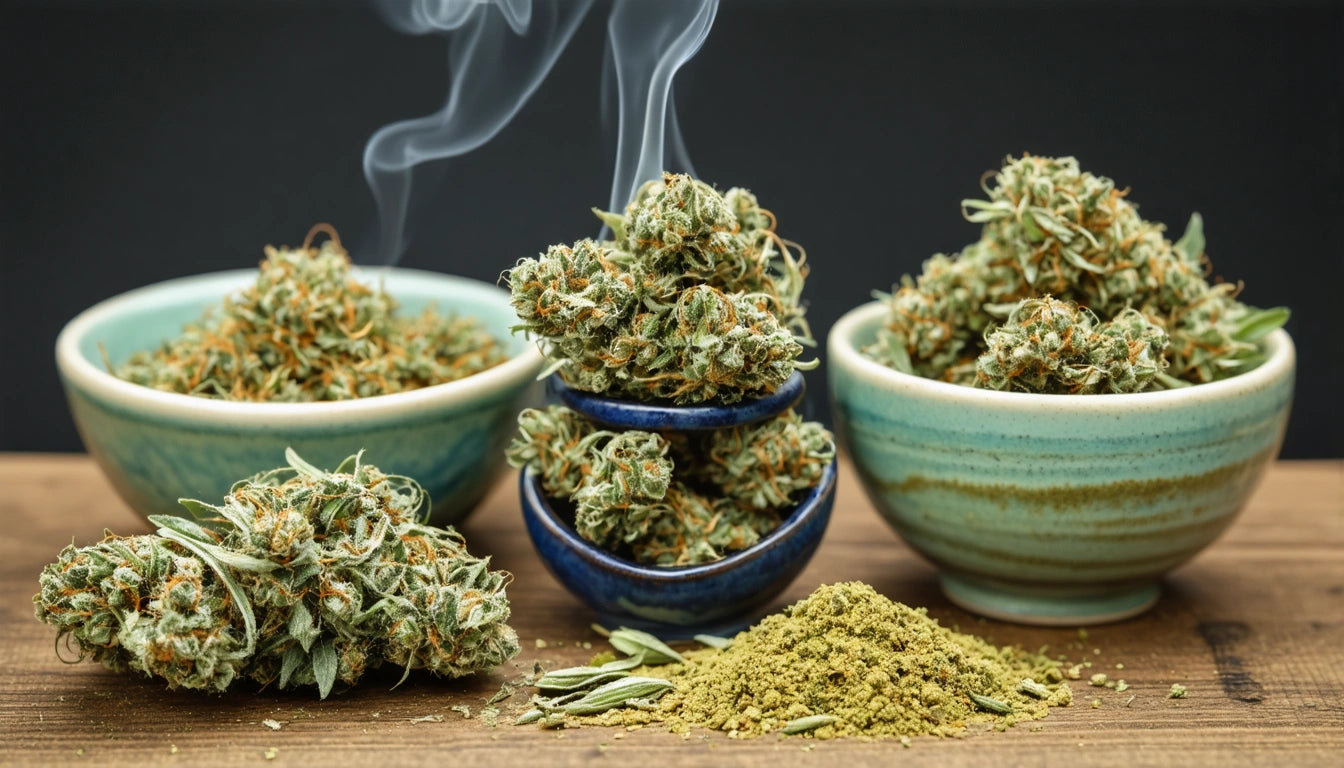Table of Contents
Creative DIY Pipe-Making: Easy Methods and Materials
When commercial smoking accessories aren't available, knowing how to make a homemade pipe can be a valuable skill. DIY pipes can be crafted from various everyday materials, offering temporary solutions for cannabis enthusiasts. This guide explores several methods to create functional pipes using common household items.
Essential Materials for DIY Pipe-Making
Before learning how to make a pipe, gather these basic supplies that work across multiple DIY methods:
- Aluminum foil (for bowls and screens)
- A pen or pencil (for creating airways)
- A knife or scissors (for cutting and shaping)
- Tape (preferably heat-resistant)
- A needle or pin (for poking small holes)
Safety is paramount when making homemade pipes. Avoid materials that emit toxic fumes when heated, such as plastics containing PVC or certain metals with chemical coatings. The step-by-step guide to DIY pipes emphasizes using food-grade materials whenever possible.
How to Make a Pipe Out of a Water Bottle
Water bottle pipes are among the easiest makeshift smoking devices to create:
Materials Needed:
- Empty plastic water bottle
- Aluminum foil
- Something sharp (pen, pencil, or small screwdriver)
Step-by-Step Instructions:
- Empty and rinse the water bottle thoroughly
- Create a small hole in the side of the bottle, about 2-3 inches from the bottom
- Shape a piece of aluminum foil into a bowl shape and place it over the bottle's mouth
- Press the foil down slightly to create a depression
- Use a pin to poke several small holes in the foil bowl
- Cover the bottle cap opening with your finger when lighting, then release to clear the chamber
This method is detailed in our DIY guide to homemade weed pipes, which also covers proper maintenance techniques.
Creating a Simple Can Pipe
Learning how to make a pipe out of a can is another popular method:
Materials Needed:
- Empty aluminum can (soda or beer)
- Pin or needle
- Lighter or matches
Step-by-Step Instructions:
- Rinse and dry the can thoroughly
- Create a slight indentation on the side of the can near the bottom
- Use a pin to poke several small holes in this indentation (this forms your bowl)
- Create a larger hole on the side of the can for the carb (optional)
- Remove any paint from the bowl area using sandpaper
For those concerned about maintaining proper humidity for their herbs when storing, our humidity control solutions can help preserve freshness between uses, ensuring optimal experience even with homemade devices.
Fruit and Vegetable Pipes: Natural Alternatives
Fruit and vegetable pipes offer a natural, non-toxic alternative to synthetic materials:
Apple Pipe:
- Remove the stem from a firm apple
- Create a bowl by carving a small depression at the top
- Push a pencil horizontally through the center of the apple to create an air path
- Create another hole that intersects with the horizontal chamber for the mouthpiece
- Optional: Create a carb hole on the opposite side
The step-by-step guide to crafting an apple pipe offers detailed instructions with visuals for this method. Other fruits and vegetables that work well include carrots, potatoes, and cucumbers.
Repurposing Household Items for Makeshift Pipes
Several common household items can be repurposed to make a makeshift pipe:
Highlighter Pipe:
To make a pipe out of a highlighter:
- Disassemble the highlighter completely
- Remove the ink reservoir and felt tip
- Clean the tube thoroughly
- Create a bowl using aluminum foil at one end
- Poke small holes in the foil
- Use the opposite end as the mouthpiece
Socket Wrench Pipe:
Metal socket wrenches from tool sets can serve as durable bowls when attached to makeshift stems. Ensure the socket is made of stainless steel and thoroughly cleaned before use.
For more sophisticated techniques, the guide to mastering pipe smoking techniques offers insights on how to hit a pipe properly regardless of the construction method used.
Best Practices for Using Homemade Pipes
When using any homemade pipe, follow these guidelines for the best experience:
- Always test your creation with a small amount first
- Replace fruit or vegetable pipes after each use
- Clean makeshift pipes regularly to prevent resin buildup
- Avoid inhaling too deeply on untested devices
- Consider homemade pipes as temporary solutions rather than permanent fixtures
For those interested in proper packing techniques, our guide to packing a pipe with weed provides valuable insights that apply to both commercial and DIY pipes.
While learning how to make a ganja pipe can be a fun DIY project, remember that these methods are best used as temporary solutions. For regular consumers, investing in quality, purpose-made smoking accessories ensures a safer, more consistent experience in the long run.











Leave a comment
All comments are moderated before being published.
This site is protected by hCaptcha and the hCaptcha Privacy Policy and Terms of Service apply.